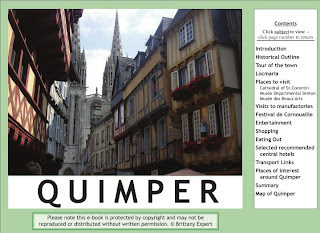 Still struggling with physical movement, but working 'normally' on new book The Legends of Brittany. This is organised thematically with chapters on saints, Dark Age semi-historical tales, Arthurian stories, women in legend, landscape, giants and dwarves, megaliths, etc.
Still struggling with physical movement, but working 'normally' on new book The Legends of Brittany. This is organised thematically with chapters on saints, Dark Age semi-historical tales, Arthurian stories, women in legend, landscape, giants and dwarves, megaliths, etc. Currently researching death and the devil, which, in Brittany, means an amusing combination. Both Ankou (Grim Reaper) and the Devil (Red Man) are almost appealing figures until the Church sticks its oar in, puts the fear of God into life and demonises the poor old devil. The fact he's clearly working hard to punish sinners surely makes him one of the good guys?
I particularly like this photo of the Devil from the calvaire at Plougonven. It's traditional to represent the scene of the Devil tempting Jesus in statuary on this type of monument, but conventionally he wears the concealing robes of a monk - cloven hooves, claws or horns just poking out to give the game away. Here the Devil seems to be dressed as a 17th century rector, thus contemporary with the time of erection. Was there by any chance a falling out between the priest and the sculptor? Hope so.




















